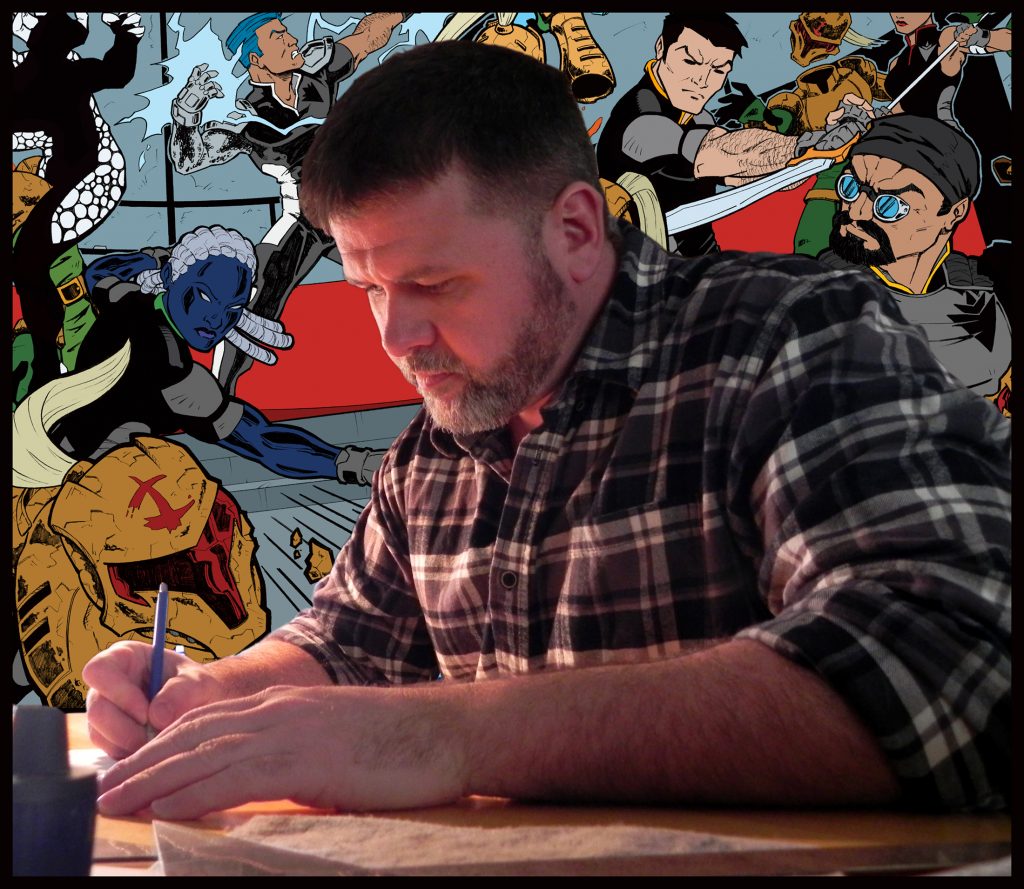“Art and design is in everything we do and every subject we study. Visual literacy is as important now as it ever was. We really need to take advantage of opportunities to educate ourselves and our children in the arts.” So says Jack Stepp, an art teacher at Creswell High School. Creswell, with a population of about 5,000, is a community undergoing a metamorphosis. “Creswell has been trying to find its place after 20 years of transition from a mill and farm community,” says Jack. “We have survived some deep budget cuts over the years and are beginning to build again.”
At the high school, which boasts around 400 students, Jack also teaches architectural drafting, CAD, and woodshop to students from all four grades who arrive with varied interests and skill levels. He has found VTS an effective technique to get students engaged. “As an art teacher I am used to leading student discussions. With a VTS lesson the instructor acts as the facilitator and allows the student driven discussion to follow a natural course . . . Once the students understand that there is no wrong answer and the momentum gets going, students become so engaged and want their opinions to be heard that they get irritated if you don’t call on them. They almost fight for their turn to speak.”
Given the range of students involved in Jack’s classes, he also finds that VTS encourages students to respect other viewpoints. “The VTS method stresses that there is no wrong answer, listening to others opinions, and if you disagree you do it in a respectful manner that does not belittle those opinions. It teaches students that it is ok to disagree. This can be a difficult concept for adults. The hope is that this will carry over to other classes and even their personal conversations.”
VTS also seems to spur students to be more mindful in their individual work. “One unforeseen side effect of using VTS is that the students begin to build narratives about the work they are speaking about. I began encouraging them to create a narrative before beginning a new artwork. This has increased their interest in completing assignments that may otherwise be routine practice . . . I use VTS mainly in Drawing classes. When we begin a new project, a courtyard drawn in 2-point perspective for example, we will do a VTS lesson that has a variety of courtyard drawings, photos, or paintings. As the students participate in the classroom discussion they naturally begin to form a narrative about the example. Then as they work on their rough drafts for the assignment I encourage them to create a narrative for the picture they are creating. This leads to an increased level of detail and engagement in their own work.”
Of the STELLAR Project, Jack says, “I feel that teachers from all disciplines should try this program. It is a great tool to use in your classroom to encourage deeper thinking. It helps students to be more thoughtful. Most importantly in a time when formal exposure to the arts is diminishing, it teaches a greater appreciation for art, not only among students but teachers as well . . . I went into the program with a colleague that I knew pretty well, one that was new to our building, also peers from our other schools. Those relationships grew much stronger as we went through the program together. It was nice to get to know colleagues who work in our district, but that I only see two or three times a year.”
The STELLAR Project is pleased to honor our outstanding participants and mentors in this Featured Teacher series. Check back soon to learn about more of our fantastic teachers!

